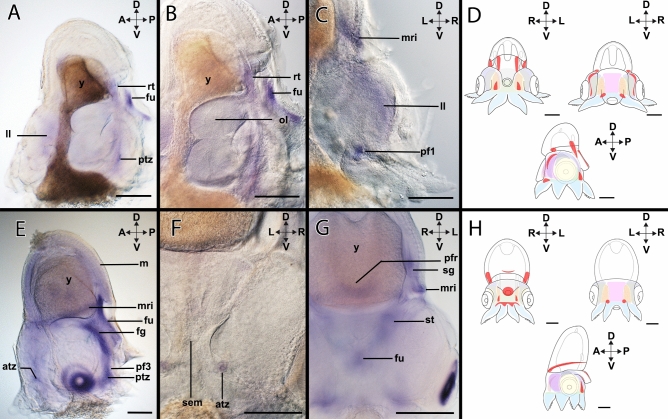Figure 4.
Expression of Hox3 in developmental stages of Octopus vulgaris. Dorsal (D)–ventral (V), anterior (A)–posterior (P), and left (L)–right (R) axes indicate the orientation. Lateral views (A,B,D); anterior views (C,E); posterior view (F). Stage XIV (A–C), Stage XVIII (D–F). (A) Stage XIV specimens show Hox3-expression in the posterior region around the posterior transition zone (ptz), in the anterior region of the lateral lips (ll), in the funnel (fu), and in the retractor (rt). (B) Hox3 is expressed in the funnel. (C) Hox3 transcripts are located in the lateral lips and in a defined cluster in arm pillar I (pf1). In addition, expression is also present in the mantle rim (mr). (D) Overview of the expression pattern of Hox3 (red) in the embryo during stage XIV. (E) In stage XVIII, Hox3-expression is located in the posterior region of the embryo. The mantle rim, the funnel, and the funnel gland (fg) exhibit Hox3 transcripts. On the ventral side, Hox3 expression domains are located in the anterior transition zone (atz), the posterior transition zone, and in the pillar of the arm pair III (pf3). (F) Hox3-expression is observed in two symmetrical dots in the anterior transition zone anterior to the supraesophageal mass (sem). (G) In the posterior region, Hox3-expression is present in the posterior funnel rim (pfr), the stellate ganglia (sg), and the mantle rim. (H) Overview of the expression pattern of Hox3 (red) in the embryo during stage XVIII. st statocysts, ol optic lobe, y yolk. Scale bars: 200 µm.

